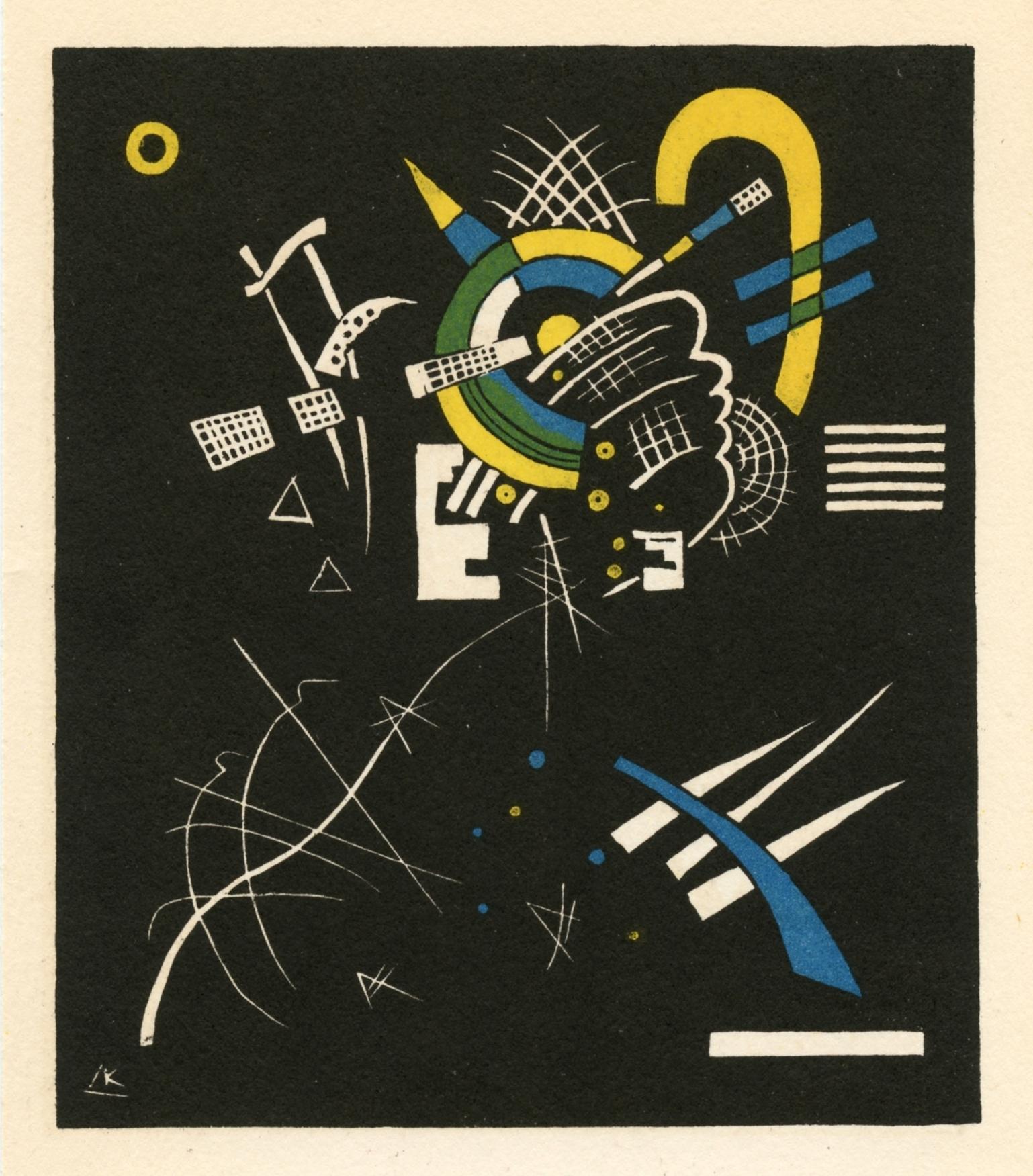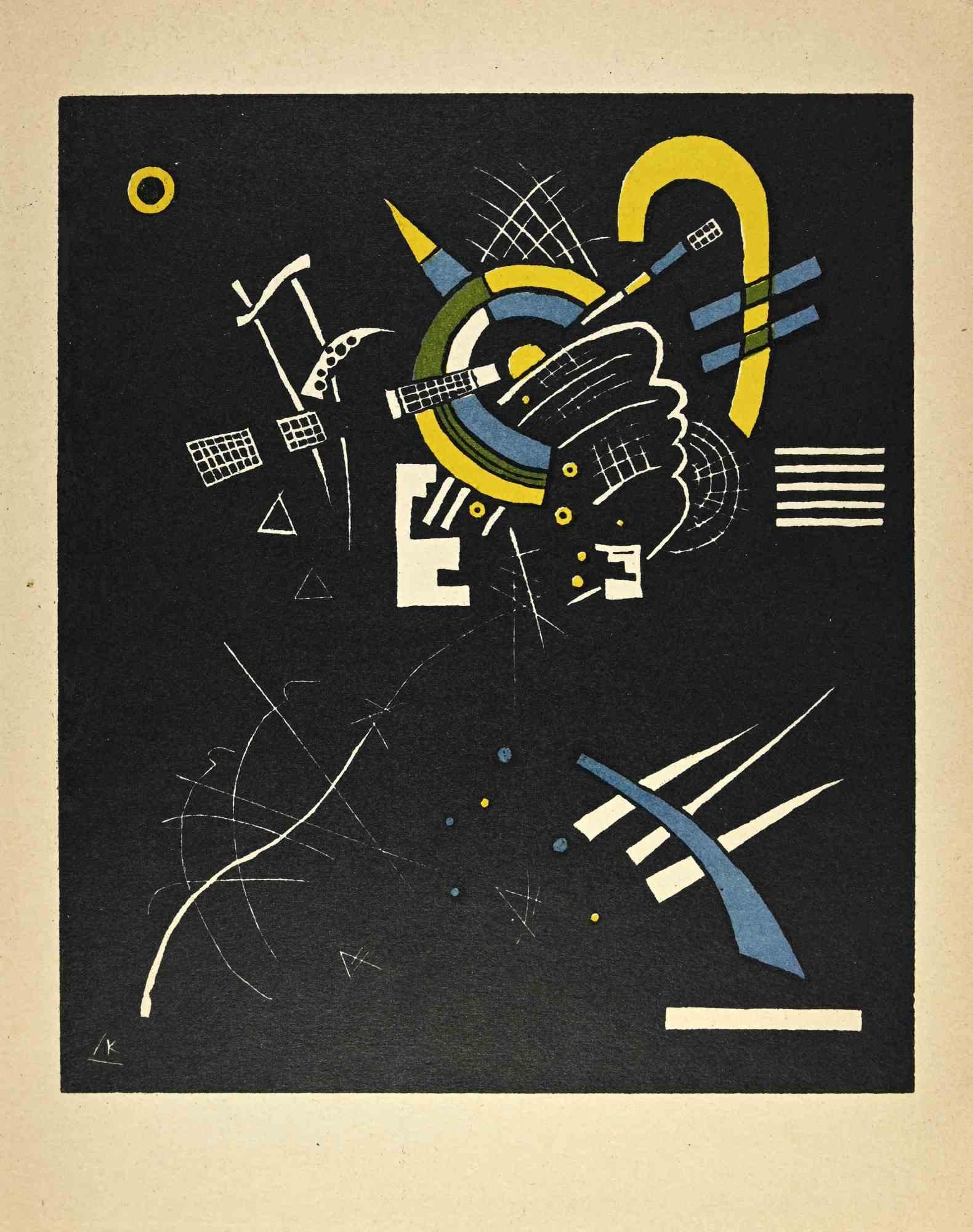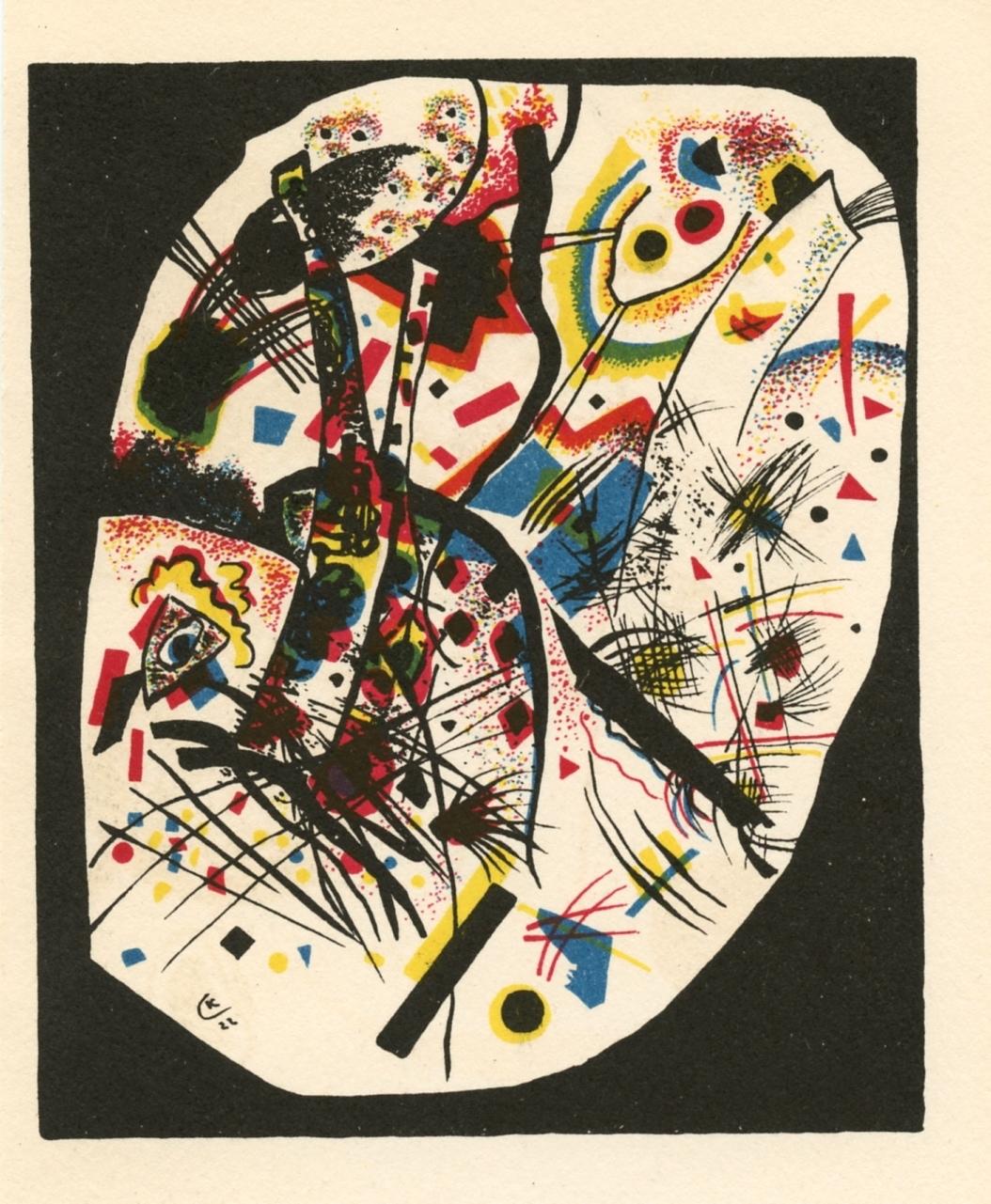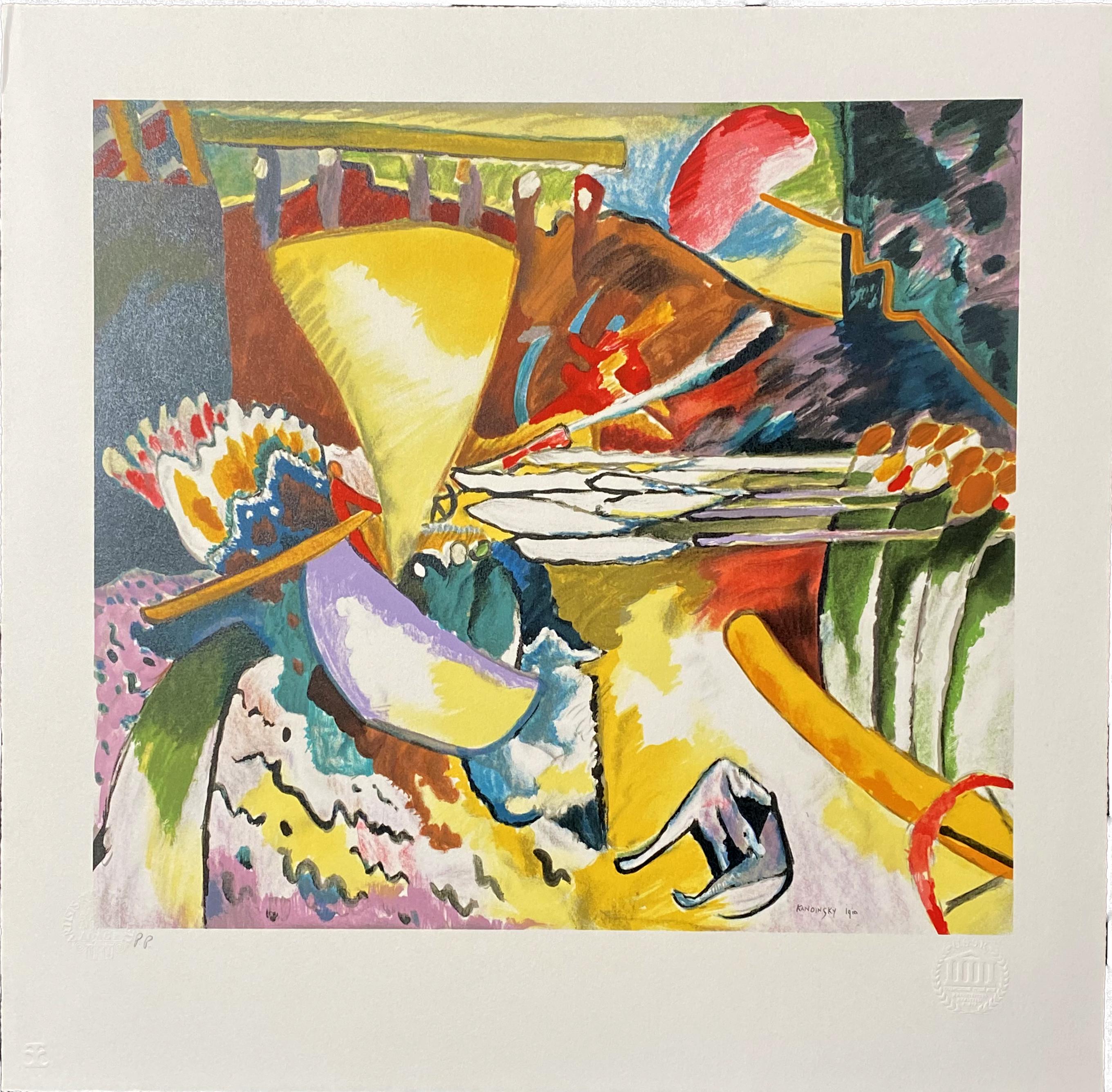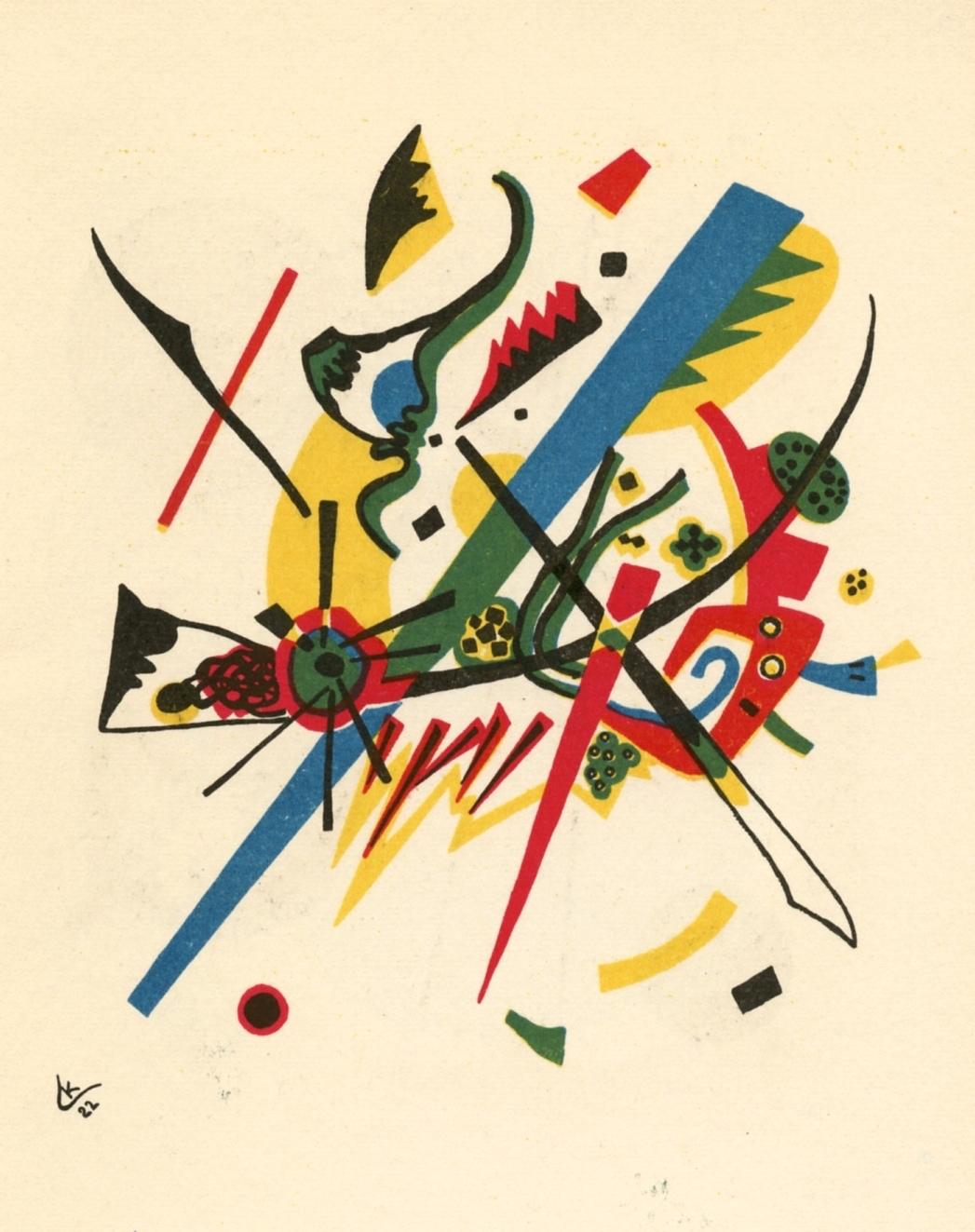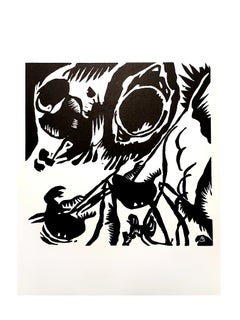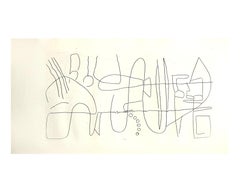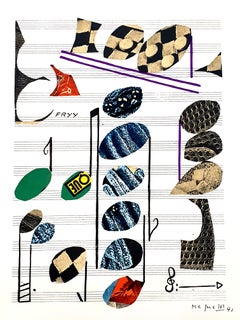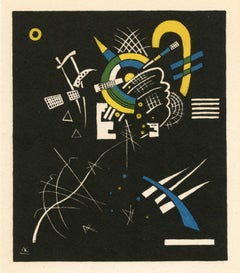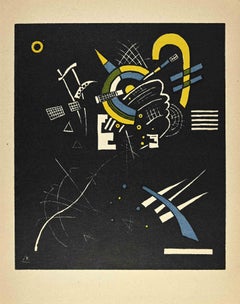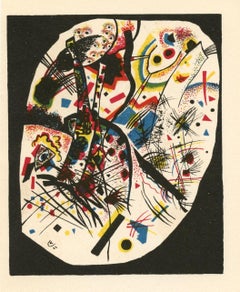Items Similar to Wassily Kandinsky (after) - Small World - Lithograph
Want more images or videos?
Request additional images or videos from the seller
1 of 8
Wassily Kandinsky (after) - Small World - Lithograph1952
1952
$1,762.50
£1,349.66
€1,500
CA$2,477.20
A$2,717.35
CHF 1,421.76
MX$32,341.88
NOK 17,957.69
SEK 16,844.64
DKK 11,426.90
About the Item
Wassily Kandinsky (after) - Small World - Lithograph
Conditions: excellent
32 x 24 cm
1952
From the art review XXe siècle, San Lazzaro
Unsigned and unumbered as issued
- Creation Year:1952
- Dimensions:Height: 12.6 in (32 cm)Width: 9.45 in (24 cm)Depth: 0.04 in (1 mm)
- Medium:
- Movement & Style:
- After:Wassily Kandinsky (1866 - 1944, Russian)
- Period:
- Condition:
- Gallery Location:Collonge Bellerive, Geneve, CH
- Reference Number:1stDibs: LU16124470182
About the Seller
4.9
Gold Seller
Premium sellers maintaining a 4.3+ rating and 24-hour response times
Established in 2015
1stDibs seller since 2015
967 sales on 1stDibs
Typical response time: 1 hour
- ShippingRetrieving quote...Shipping from: Collonge Bellerive, Geneve, Switzerland
- Return Policy
More From This Seller
View AllWassily Kandinsky - Composition - Woodcut
By Wassily Kandinsky
Located in Collonge Bellerive, Geneve, CH
Wassily Kandinsky - Composition - Original Woodcut
Condition: excellent
32 x 24 cm
1959
Published by XXe siècle, San Lazzaro
Printed signature (monogram) in the plate
Unnumbered as i...
Category
1960s Abstract Geometric Animal Prints
Materials
Woodcut
André Lanskoy - Composition - Original Etching
By André Lanskoy
Located in Collonge Bellerive, Geneve, CH
André Lanskoy - Composition - Original Etching
From Dédale
Edition: 190
Dimensions: 32 x 18 cm
This etching is from the first series of etching Lanskoy made.
Unsigned and unumbered ...
Category
1960s Abstract Expressionist Abstract Prints
Materials
Etching
André Lanskoy - Composition - Original Etching
By André Lanskoy
Located in Collonge Bellerive, Geneve, CH
André Lanskoy - Composition - Original Etching
From Dédale
Edition: 190
Dimensions: 32 x 18 cm
This etching is from the first series of etching Lanskoy m...
Category
1960s Abstract Expressionist Abstract Prints
Materials
Etching
After Alberto Magnelli - Sorlier Lithograph
By Alberto Magnelli
Located in Collonge Bellerive, Geneve, CH
Alberto Magnelli (After)
Lithograph, Charles Sorlier
32 x 24 cm
1971
XXe siècle, San Lazzaro
Signed in the plate
Unumbered as issued
Category
1970s Abstract Geometric Abstract Prints
Materials
Lithograph
Wassily Kandinsky - Horse Knight - Original Etching
By Wassily Kandinsky
Located in Collonge Bellerive, Geneve, CH
Wassily Kandinsky - Horse Knight - Original Etching
32 x 24 cm
1966
From the art review XXe siècle, San Lazzaro
Unsigned and unumbered as issued
Category
1960s Abstract Geometric Animal Prints
Materials
Etching
Pierre Alechinsky - Composition - Original Lithograph
Located in Collonge Bellerive, Geneve, CH
Pierre Alechinsky - Composition - Original Lithograph
From the literary review "XXe Siècle"
1960
Dimensions: 32 x 24 cm
Publisher: G. di San Lazzaro.
Unsigned and unumbered as issued
Category
1960s Abstract Abstract Prints
Materials
Lithograph
You May Also Like
Small Worlds - Lithograph
By (after) Wassily Kandinsky
Located in Paris, IDF
Wassily Kandinsky
Small Worlds, 1952
Stone Lithograph (3 color stones)
Printed signature in the plate
On vellum 31 x 24 cm (c. 12,2 x 9,5 in)
Edited by S...
Category
1950s Abstract Abstract Prints
Materials
Lithograph
"Kleine Welten VII" lithograph
By (after) Wassily Kandinsky
Located in Henderson, NV
Medium: lithograph (after the woodcut). Printed in Paris in 1954 by Mourlot and published by Berggruen for a scarce catalogue. Image size: 4 1/2 x 4 inches (117 x 100 mm). There is a...
Category
1950s Prints and Multiples
Materials
Lithograph
Composition - Woodcut after Vasilij Kandinskij - mid-20th century
Located in Roma, IT
Composition is a woodcut print realized in the mid-20th Century after Wassily Kandinsky (1886-1944).
Good condition on a white cardboard.
Monogrammed by the artist on the lower lef...
Category
Mid-20th Century Abstract Abstract Prints
Materials
Etching, Aquatint
"Kleine Welten III" lithograph
By (after) Wassily Kandinsky
Located in Henderson, NV
Medium: lithograph (after the original). Printed in Paris in 1954 by Mourlot and published by Berggruen for a scarce catalogue. Image size: 4 3/4 x 4 inches (120 x 100 mm). There is ...
Category
1950s Prints and Multiples
Materials
Lithograph
Improvisation 11 Limited Edition Lithograph 1990
By (after) Wassily Kandinsky
Located in Rochester Hills, MI
Wassily Kandinsky - Improvisation 11
1910
Lithograph in colors on Arches paper,
1990
Paper size 24" x 24" inches
Image size 18" x 20" inches
Stamped signature
Blindstamps of the Russ...
Category
Early 1900s Abstract Expressionist Abstract Prints
Materials
Lithograph
"Kleine Welten I" lithograph
By (after) Wassily Kandinsky
Located in Henderson, NV
Medium: lithograph (after the original). Printed in Paris in 1954 by Mourlot and published by Berggruen for a scarce catalogue. Image size: 4 1/2 x 4 inches (115 x 100 mm). There is ...
Category
1950s Prints and Multiples
Materials
Lithograph
